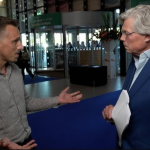Now Reading: How to Effectively Choose Information Amid a Sea of Sources
-
01
How to Effectively Choose Information Amid a Sea of Sources
How to Effectively Choose Information Amid a Sea of Sources

In a world where information flows endlessly from countless streams, ranging from traditional media outlets to social platforms and independent blogs, the ability to effectively navigate this immense sea of sources has become one of the most critical skills for individuals seeking clarity, accuracy, and meaning. Every day we are presented with headlines, posts, videos, and research studies that all clamor for attention, often competing not just with the goal of informing us but also with the aim of influencing, persuading, or entertaining. The sheer abundance of content means that people are frequently left overwhelmed, unable to discern which details deserve attention and which should be set aside. This situation is further complicated by the fact that not all sources share the same standards of credibility, transparency, or accountability. As a result, those who wish to make informed decisions are faced with a constant task: choosing wisely where they place their trust and how they verify the material they consume. Approaching this challenge requires us to embrace careful thinking, to learn methods of quickly scanning for reliability without falling into the trap of haste, and to adopt strategies for systematic comparison of facts across multiple platforms. Developing such an approach allows us to rise above the noise of half-truths, emotional manipulation, and information overload, transforming the act of reading or researching into a purposeful process rather than a passive experience of scrolling. By grounding ourselves in principles of critical evaluation, establishing clear criteria for what counts as authoritative, and practicing restraint in what we immediately accept or share, we can move toward mastering the art of choosing information thoughtfully. Only then do we transform ourselves from passive consumers into active evaluators, ensuring that the insights we draw from the world are rooted in trustworthiness and relevance, rather than accident or misinformation.
Once we recognize that our digital and offline spheres overflow with competing voices, the next natural step is to learn to set clear and conscious filters that help us distinguish meaningful information from noise, while also acknowledging our own biases and tendencies in seeking confirmation of what we already believe. The process of thoughtfully choosing amid this abundance demands patience and self-awareness, because the overwhelming presence of data can trick us into thinking that quantity automatically equates to depth or truth. In reality, the prevalence of sources requires us to adopt a disciplined lens, one that balances openness to new perspectives with a healthy skepticism of unsupported claims. This involves practical habits: pausing before accepting a claim at face value, investigating the background of authors or platforms, checking whether multiple reputable outlets report the same facts, and understanding that timeliness does not always equal accuracy. Beyond individual techniques, building a culture of intentional selection also means being mindful of our emotional responses. Sensationalism thrives on immediate reactions, designed precisely to bypass careful weighing of information. By noticing when a headline or post provokes unusually strong feelings, we can use that as a signal to slow down and examine the integrity of the source before proceeding. Moreover, developing resilience against information fatigue is crucial, as fatigue often leads to uncritical acceptance or avoidance, neither of which fosters strong decision-making. Instead, a balanced rhythm of seeking, pausing, verifying, and reflecting allows us to remain engaged without becoming consumed by the flood of content. Ultimately, choosing wisely among sources is less about finding absolute certainty in every detail and more about consistently applying thoughtful methods that safeguard us against distortion. In cultivating awareness, restraint, and curiosity, we create for ourselves a roadmap through the chaotic landscape of modern communication, ensuring that the information we embrace helps us learn, grow, and act with confidence rather than confusion.















